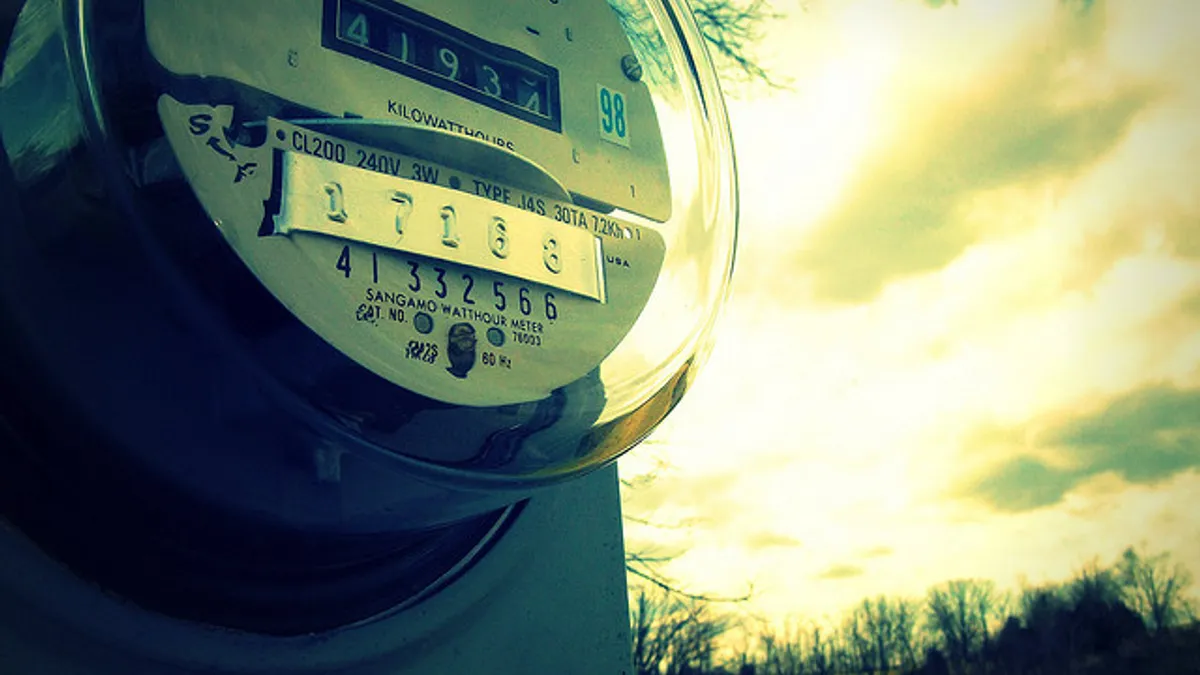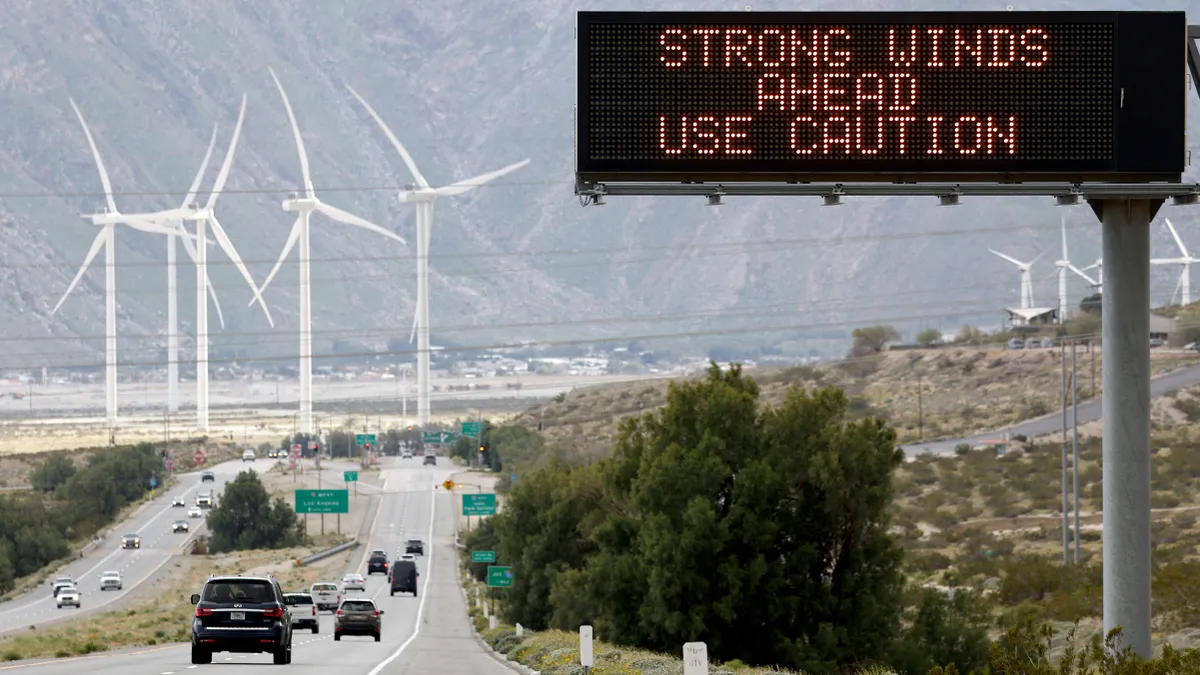As distributed resources create opportunity and occasional chaos across the electric industry, regulators in every state are struggling to design rates that reflect the new order of the grid. From net metering to fixed charges to minimum bills, the proceedings are often contentious and prone to winding up in front of a judge.
Last week, a diverse set of clean energy stakeholders — more than 30 consumer, renewable energy and environmental organizations — sent a letter to leadership at the National Association of Regulatory Utility Commissioners (NARUC) advocating for a common set of principles to help direct rate cases and avoid drawn out fights. The group did not advocate a specific policy or solution in the note, provided to Utility Dive by the coaliton, but instead focused on the ratemaking process and the information underpinning it.
"What we're proposing, is to think more holistically about how to go about changing rate design," said Rick Gilliam, program director of distributed generation regulatory policy for Vote Solar. "It's not so much a proposal as a process. ... It's sort of, motherhood and apple pie."
In other words, the guiding principles are supposed to be broadly palatable, actively searching for common ground as opposed to looking for a fight.
"This industry is evolving at breakneck speed," said John Howat, senior policy analyst for the National Consumer Law Center. "We need to be able to slow down and engage in dialogue with all stakeholders and interested parties, before we go right to litigation where it can be more challenging to try and develop creative solutions and change the way decisions are made."
"Everyone I've talked to agrees that before we go to litigation, let’s talk and see what we have in common and see what differences might exist," Howat said. But he warned, "that's a sea change in the way things have been done."
In total, 32 organizations signed the letter, including the Southern Environmental Law Center, The Utility Reform Network, the Environmental Defense Fund, the National Association for the Advancement of Colored People, SunPower Corp. and Natural Resources Defense Council.
"Our organizations have not traditionally seen eye to eye on everything," they wrote. "But more and more these days, we’re finding and forging common ground."
Six guiding principles
NARUC is the organization that represents and convenes state utility regulators from around the U.S. Its Staff Subcommittee on Rate Design is developing a manual on distributed energy resources compensation, and recently conducted a survey that asked about rate designs, challenges and key cases.
But according to the clean energy group, "regulatory process" was not covered in their survey, leading to their development of a half dozen guiding principles.
The principles aim to "improve the likelihood of success and manage any risk associated with change," according to the letter.
"It is broader than the impact of solar PV and net metering," the group wrote. "The increased prevalence of energy efficiency, demand response, storage and electric transportation should also be explored as they continue to grow and more innovations and choices enter the market. We believe that with appropriate and equitable allocation of costs, these new technologies and customer options can provide many benefits, and we therefore support their cost-effective development and deployment."
The groups said a "good regulatory process" would include: an assessment and analysis of state conditions; collaborative, upfront, open, docketed processes that explore a range of rate options; pilot programs for new rate structures; accommodation for low-income customers; and opportunity to educate ratepayers on the new designs in advance of their implementation.
Also, new rates should be based on sound data, the group said. In the case of solar resources, for instance, that could include deployment rates and locations, hourly production profiles, hourly line losses, distribution costs, and load data for individual circuits.
"During collaboration, commissions should start the process of defining and collecting the data necessary to inform future policy discussions," the group wrote.
"In my view, it really is extraordinary to have a conversation that explicitly brings in principles of clean energy and decarbonization alongside equity and cost minimization," said Howat. "Oftentimes those principles have been viewed in conflict and we’re trying to find common ground. ... We need to be able to make data-driven policy decisions. Without access to a full range of important information its impossible to come to informed, appropriate policy decision."
Diane Munns, senior director of external affairs and regulatory policy for Environmental Defense Fund's Clean Energy Program, said there can be various reasons data isn't immediately available. It could be data a utility doesn't keep regularly, or doesn't have available, but in general, "it's harder to get data in the context of a rate case," she said, but that can be improved "if you have a collaborative process."
Gilliam said he's been involved in a number of cases where the utility said it talked with groups before filing a rate case. "But they didn't talk to the people who wind up being involved in the case — they talk to staff and state advocates, but generally not the parties they need to talk to," he said, advocating for a broader process. "Bring the data, and let’s have an inclusive discussion."
One common enemy: fixed charges
While the group stayed away from specific suggestions, the letter noted broad agreement on at least one policy: "Increases in fixed charges are among the least effective ways for utilities to adapt, particularly in light of the well-documented impacts on customer costs, conservation, equity and the ability for customers to control their energy bills."
Three and a half years ago, Edison Electric Institute, which represents investor-owned utilities, released its a report titled “Disruptive Challenges,” recommending utilities increase fixed charges to make up for stagnant load growth and customers installing their own distributed generation. While the report's author and EEI as an organization have since pulled back from that idea, recent years have seen a broad increase in the number of cases involving fixed rates.
The trend appears to be reversing, but even last fall there were dozens of proposals to increase fixed fees, in a diverse batch of states like Hawaii, Vermont, New Mexico, Texas and Wisconsin.
"Everyone in this group fully agreed that fixed charge rate design, applicable to all customers, is really not the approach that will solve utility revenue problems while moving us forward in a way that promotes cleaner energy resources but also control over the bill," said Howat.
The group's letter references EEI's more recent "primer" on rate design a few times, and is intended to serve as a response to some of the document's views, but for the most part appeared to search for common ground. The utility trade group sent a letter in February to the NARUC subcommittee on rate design, and there is agreement between the documents on approach.
"The electric system benefits (e.g. cost savings) attributable to [distributed generation] can include energy, capacity, transmission and distribution (T&D) system deferral, and line loss reductions, as well as enviromental and other benefits as assessed in each jurisdiction," EEI wrote.
The clean energy coalition quoted that section in their letter last week, and followed by saying "collecting data to put actual numbers to these costs and benefits is an important step." The call for greater use of data to inform ratemaking decisions is a relatively easy principle to support, according to the letter's signatories.
"Sometimes you can decide what you're against, but what are you for?" Munns said. "It becomes difficult to reach an agreement. ... What you’re for really for depends on the goals and the weight you give to the different principles. So let’s start and talk about those principles."
The group sent its letter to NARUC President Travis Kavulla and other leadership at the organization last week, but so far the group is reticent to comment on the specifics.
Kavulla responded to the letter in an email to Munns, thanking the group for the effort. "As you can imagine, our staff subcommittee has received a large quantity of advocacy and feedback of all sorts on this topic, and I am grateful when groups like all of yours go to the diligent effort of finding common ground," he said.























